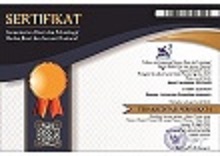PORTABLE HOUSE: ARSITEKTUR BAGI KAUM MISKIN KOTA
Abstract
Abstract: One of urban demography problem is the explosion of urban population due to the activity of migration and poverty, including structural poverty. One of the urban poos groups is the scavengers. This paper, have no intention at all to discuss regarding poverty problem, including scavengers from the perspective of economic solution, rather, will study from the perspective of experimental architecture. Mayeng scavengers become the object of case study, because rare for architecture to discuss about this lower class society. The assumption is architecture shoud play a role in the context of social, due to its intervention will influence and further change the face and features of the city. In relation to that, this paper have a purpose to analyse the need of housing for scavengers, also obtained solution of design optimally, even in the context of experimental architecture.
Keywords: poor society, structural poverty, mayeng scavenger, portable house
Abstrak: Salahsatu problema demografi perkotaan, adalah ledakan populasi penduduk akibat migrasi dan kemiskinan, termasuk kemiskinan struktural. Salahsatu kelompok miskin kota adalah para pemulung. Paper ini, sama sekali tidak bermaksud untuk membahas problematika kemiskinan, termasuk pemulung dari sudut pandang solusi ekonomi, akan mengkaji dari sudut pandang arsitektur eksperimental. Pemulung mayeng menjadi objek studi kasus, karena arsitektur sangat jarang menyentuh masyarakat kelas bawah ini. Asumsinya, arsitektur harus memainkan peran dalam konteks social, karena intervensi arsitektur akan mempengaruhi dan bahkan mengubah perjalanan wajah dan fitur kota. Sekaitan itu, paper ini bertujuan untuk menganalisis kebutuhan tempat tinggal bagi pemulung, serta menemukan solusi desain secara optimal, meskipun berada pada konteks arsitektur eksperimental.
Kata kunci : masyarakat miskin, kemiskinan struktural, pemulung mayeng, portable houseFull Text:
PDFReferences
Barliana, M.S. (2020). Arsitektur Eksperimental; Menempuh Dua Jalan. Bandung. UPI Press
Bruenig, M. (2014). One-Third ofAmericans Are In Or Near Poverty, DEMOS: POLICYSHOP (Oct. 20, 2014), https://www.demos.org/blog/10/20/14/one-third-americans-are-or-near-poverty [http://perm a.cc/U3W6-KWTA].
Ghofur, A (2009). Manusia Gerobak: Kajian mengenai Taktik-Taktik Pemulung Jatinegara di Tengah Kemiskinan Kota Abdul Ghofur. Jakarta: Lembaga Penelitian SMERU
Greene (2019). A Theory Of Poverty: Legal Immobility. Washington University Law Review [Vol. 96:753, 2019. Https://Scholarship.Law.Duke.Edu/Cgi/
Jayani, D.H. (2019) Berapa Jumlah Penduduk Perkotaan di Indonesia? https://databoks.katadata.co.id/ datapublish/2019/09/11/.
Kawalo, A.Y.F., Ngangi, C.R., Loho, A.E. Kawalo, A.Y.F., Ngangi, C.R., Loho, A.E.(2016). Kajian Bertahan Hidup Pemulung Di Tempat Pembuangan Akhir Sampah Kelurahan Sumompo Kecamatan Tuminting, Manado. ASE – Volume 12 Nomor 1, Januari 2016: 47 - 54 47. https://ejournal.unsrat.ac.id/index.php/jisep/article/download/11374/11049
McDonald, J. F., & McMillen, D. P. (2008). Urban Economics and Real Estate. Oxford: Blackwell Publishing.
Murray, C.K. (2014). Structural vs individual poverty theories: A comment. Fresh Economic Thinking. https://www.fresheconomicthinking.com/2014/07/structural-vs-individual-poverty.html.
Nuraedah (2014). Pemulung yang Termarginalkan: (Studi Sosial Ekonomi Masyarakat Pemulung di Kelurahan Lasoani). http://jurnal.untad.ac.id/jurnal/index.php/Kreatif/article/download/ 3354/2390
Sudarso (2015). Tekanan Kemiskinan Struktural Komunitas Nelayan Tradisional di Perkotaan. Jurusan Sosiologi FISIP, Universitas Airlangga. http://www.berpendidikan.com/2015/09/
Sukmawati. A. (2007) Resiprositas Dalam Komunitas Pemulung di Kelurahan Utan Kayu Selatan Kecamatan Matraman Jakarta Timur. Semarang : FIS UNNES.
Woods, L. (2010). Carnegie MoA - Taking on a Risk. http://lebbeuswoods.net/carnegie.pdf.
DOI: https://doi.org/10.17509/jaz.v3i2.25135
Refbacks
- There are currently no refbacks.
Copyright (c) 2020 M Syaom Barliana

This work is licensed under a Creative Commons Attribution-ShareAlike 4.0 International License.






